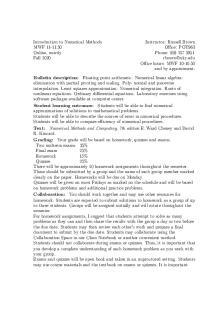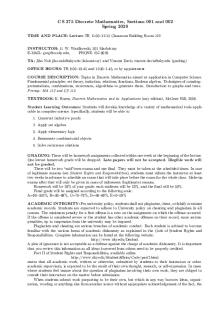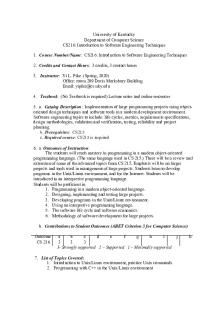Lorem ipsum dolor sit amet, consectetur adipiscing elit, sed do eiusmod tempor incididunt ut labore et dolore magna aliqua. Ut enim ad minim veniam, quis nostrud exercitation ullamco laboris nisi ut a PDF

| Title | Lorem ipsum dolor sit amet, consectetur adipiscing elit, sed do eiusmod tempor incididunt ut labore et dolore magna aliqua. Ut enim ad minim veniam, quis nostrud exercitation ullamco laboris nisi ut a |
|---|---|
| Course | mechanical |
| Institution | Handelsgymnasiet Lolland-Falster |
| Pages | 100 |
| File Size | 12.6 MB |
| File Type | |
| Total Downloads | 36 |
| Total Views | 144 |
Summary
Lorem ipsum dolor sit amet, consectetur adipiscing elit, sed do eiusmod tempor incididunt ut labore et dolore magna aliqua. Ut enim ad minim veniam, quis nostrud exercitation ullamco laboris nisi ut aliquip ex ea commodo consequat. Duis aute irure dolor in reprehenderit in voluptate velit esse cillu...
Description
BUY IN PRINT WORLDWIDE MAGPI.CC/STORE
Issue 114
February 2022
magpi.cc
The official Raspberry Pi magazine
PRACTICAL
PROGRAMMING Create your own apps, games & projects!
Maker tools for all ages Recreate classic TV Teletext
Monitor your plants
magpi.cc/store
WIN! HUMANOID ROBOT UP FOR GRABS
Design Code
Analyze
PRO FESS IO N A L CO NTRO L SYSTEM D EV ELO PM ENT TO O L
Home projects made easy. CDP Studio, a great software development tool for your home projects. Build systems for Raspberry Pi, use C++ or NoCode programming, open source libraries, out of the box support for GPIO, I2C, MQTT, OPC UA and more. Create beautiful user interfaces. Built for industrial control system development, FREE for home projects.
cdpstudio.com Tel: +47 990 80 900 • [email protected] CDP Technologies AS // Hundsværgata 8, 6008 Ålesund, Norway
WELCOME
WELCOME to The MagPi 114
EDITOR
I
love programming. I tapped out my first piece of code on a ZX-81 computer in junior school and I’ve been smitten ever since. Code controls what happens on the screen in front of you and increasingly in the world around you. Programming is an engaging process that requires thought and rewards patience. Code is good for the mind. Here at The MagPi, we see evidence of Raspberry Pi computers making the world a better place every day. Raspberry Pi brings together code with projects: weather stations, video games, robots, websites, and server systems. The possibilities with a smattering of code are mind-blowing. Which, perhaps, is why it’s often so hard to get started. But it shouldn’t be! This month, we’ve put together a feature on Practical Programming – your starter guide to picking a language, installing the tools you need, and finding the best courses to learn the basics. Then, we’ll guide you towards interesting starter projects. I believe everybody should learn to code. It teaches you a new way of thinking. And the best way to learn is with a practical project. I hope you enjoy this issue!
Lucy Hattersley Lucy is Editor of The MagPi and this month she is doing Dry January, Veganuary and humming in a mindful manner. It won’t last. magpi.cc
GE ZEROT2A W PAGE
32
Lucy Hattersley Editor PS: It’s #MonthOfMaking next issue. Get your thinking caps on!
magpi.cc
03
CONTENTS
Contents > Issue 114 > February 2022
Cover Feature
34
34 Practical Programming Regulars
92 97 98
Your Letters Next Month The Final Word
Project Showcases
08 12 14 20 22 24 28 30
DeMoor Orrery Teasmade 2.0 RMS meteor tracker Pneumonia Detection GBA Remote Play
24
Sunrise Lamp Technical Function Rotating television
12
Teasmade 2.0
Sunrise Lamp
DISCLAIMER: Some of the tools and techniques shown in The MagPi magazine are dangerous unless used with skill, experience, and appropriate personal protection equipment. While we attempt to guide the reader, ultimately you are responsible for your own safety and understanding the limits of yourself and your equipment. Children should be supervised. Raspberry Pi (Trading) Ltd does not accept responsibility for any injuries, damage to equipment, or costs incurred from projects, tutorials or suggestions in The MagPi magazine. Laws and regulations covering many of the topics in The MagPi magazine are different between countries, and are always subject to change. You are responsible for understanding the requirements in your jurisdiction and ensuring that you comply with them. Some manufacturers place limits on the use of their hardware which some projects or suggestions in The MagPi magazine may go beyond. It is your responsibility to understand the manufacturer’s limits.
magpi.cc
05
CONTENTS
58
62
Tutorials
46 50 54 58 62
Create your own Teletext Sensory World - part 4 Build a MIDI synth
LEGO® RC car
LEGO® RC car Make a retro platformer
Make a retro platformer
78
The Big Feature
68
Bangle.js 2
Maker tools for all ages
86
Reviews
78 80 82 84
Bangle.js 2 Maker HAT Base 10 amazing small projects Resources: AI
Community
86 88
Alex G This M
WI 06
magpi.cc
Alex Glow interview
TONYPI
95
PROJECT SHOWCASE
DeMoor Orrery A 240-year-old orrery provided the inspiration for Chris de Moor’s stunning planetarium project. David Crookes takes a look
MAKER
M Chris de Moor Former programmer and enthusiastic maker, Chris founded and ran a digital agency called Est Digital until earlier this year. His website links to the required GitHub files.
demoororrery.com
any people have a keen interest in astronomy, but before Chris de Moor created a project that’s truly out of this world, he didn’t count himself as being among them. “I didn’t know anything about astronomy and that sort of stuff,” he freely admits. Yet after visiting the Eise Eisinga Planetarium in Franeker in the Netherlands, he was inspired. “Eise Eisinga completed an orrery in his house in 1781,” Chris says, of the oldest working orrery in the world, created by the Frisian amateur astronomer. “I saw it on the ceiling and thought I wanted one just like that, thinking it would fit perfectly in my living room. At first I believed it would be a weekend project – a simple art piece – until I decided it should work as well. And then the rest came.” Indeed, what followed would take him a year! Chris set about building a replica, one that is similarly coloured and with planets fitted to copper tracks. But while Eisinga’s orrery was driven by a pendulum clock driving a host of mechanics in the space above the ceiling, Chris went one better: he used six Raspberry Pi Zero computers – one for each of the six planets he decided to concentrate on.
The only departure from scale are Jupiter and Saturn. They should be the size of footballs but Chris made them smaller for artistic reasons
Planetary planning “My first question was about scale and how big my orrery should be,” Chris recalls. Ultimately, he worked out that he only had room for Mercury, Venus, Earth (plus the Moon), Mars, Jupiter, and Saturn. The next step was then figuring how spaced apart they should be, the size of each representative planet and how they would move into position in real-time. “I’d heard about Raspberry Pi computers so I decided to experiment with them,” Chris says. “I also know how to program and, while Python is not my favourite language, it was easy to learn. What I
08
magpi.cc
DeMoor Orrery
didn’t know was how stepper motors worked. They were new to me. But once I bought one Raspberry Pi Zero and a stepper motor and played around, I realised what was possible.” Even so, there were lots of technical challenges along the way. “I got some plywood and started sawing, but a lot of things went wrong,” he laughs. “Trying to saw perfect circles by hand is impossible, so I had to go to a store that had a CNC cutting machine, which meant I needed a drawing and DXF vector file. I ended up in areas where I didn’t know anything.”
PROJECT SHOWCASE
Each planet is controlled by a Raspberry Pi Zero. A Nema 17 stepper motor and Adafruit Motor HAT driver are connected to it to drive it along the track
Quick FACTS > The orrery is created to scale > It cost Chris €4500 to make > It weighs 83.2 kilograms > The dimensions are 2.20 × 2.20 metres > Six Raspberry Pi Zero computers are used
The inner planets (Mercury, Venus, and Earth) are on their own system that can be removed from the rest of the orrery
Raspberry Pi in the sky Even so, he persevered and learned, ending up with two ways of moving the planets, each of which is connected to a Raspberry Pi Zero computer. Mars, Jupiter, and Saturn are attached to front-wheel drive, 3D-printed cars which run on tracks on the non-visible side of the project. The inner planets, Mercury, Venus, and Earth, are mounted to dishes. “The inner system is so small, you can’t have tracks there, so I mounted those planets on dishes and even connected Mercury directly to the axle of the stepper motor.”
To discover its position, each Raspberry Pi Zero computer detects when it passes a magnet placed on the track. This sets its counter to zero so it can work out how many steps the stepper motor must take to get a planet into position
DeMoor Orrery
magpi.cc
09
PROJECT SHOWCASE
The orrery is 30 centimetres high and suspended from the ceiling. Chris has attached it to a winch which allows it to be lowered for easy maintenance. A winding mechanism from a vacuum cleaner is used to ensure the power cord doesn’t get in the way
This car drives Jupiter around its circular track (in reality, orbits are not perfect circles). It gets electricity via two sliding contacts mounted on the back
Here’s a close-up view of the front of the Mars car with a Raspberry Pi Zero mounted on top
10
magpi.cc
DeMoor Orrery
PROJECT SHOWCASE
Recreating Eise Eisinga’s historic orrery
Eise Eisinga spent seven years creating his orrery in the 18th century. Bought by King William I of the Netherlands in 1818, it was very detailed and also kept track of the phases of the moon. Credit: Erik Zachte, Wikipedia
01
Warning! Electrical Safety Please be careful when working with electrical projects around the home. Especially if they involve mains electricity. magpi.cc/ electricalsafety
This is a view of the inner planets attached to their propeller dish. The Sun is drawn on the ceiling, otherwise it’d be 2.85 metres in diameter!
Chris de Moor opted for a simpler system because of the smaller space he had. The outer planets are connected to 3D-printed cars running on tracks, controlled by a Raspberry Pi Zero.
02
The biggest headache was working out the planetary positions. “I looked into the mathematics of NASA, and the exact positioning of Mercury is a mathematical equation, with more than 40 pages of data. It’s very, very complex,” Chris says. “I had to make it more simple, and I found a beautiful JavaScript library called JSOrrery which is installed on a server. You give it a date and it plots the planets. Raspberry Pi computers are then connected by wireless LAN and they read their position before moving their connected planets to it.” It’s not 100 percent accurate. “If you want to travel to Mars and you let yourself be guided by my orrery, then you’re definitely going to miss it,” Chris laughs. But as a working showpiece, it’s stunning and, what’s more, it has been made opensource so that anyone can try to make their own. “Maybe it will lead to something – perhaps people will contact me and it’ll involve some travelling and meeting new people,” he says. “If not, I’ve got a beautiful ceiling and that was the whole point.”
The driver runs on 12 volts and the Raspberry Pi Zero computers on 5 volts. The power supply is firmly attached to the frame
Inner planets Earth and Venus, meanwhile, are connected to a viewing dish that’s mounted to a propeller dish. Mercury is mounted directly on to the stepper motor. It allows for tighter circling.
03
DeMoor Orrery
magpi.cc
11
PROJECT SHOWCASE
Teasmade 2.0 Here’s a fresh hack on an absolute classic. Hot beverage anyone? Nicola King admits to being old enough to remember the original
T
MAKER
easmades are machines for automatically making tea. They were hugely popular in the 1960s and 1970s, and often placed in bedrooms (for the convenience of having a piping hot cup as soon as you were awoken by the machine’s alarm). The Goblin Teasmade, in particular, is something of an icon in its field. This author fondly remembers her late grandmother’s Teasmade that sat proudly in a guest bedroom, waiting for the odd bed-andbreakfast guest that she occasionally took into her home. Although, we did always wonder the
Martin Spendiff and Vanessa Bradley
The innards of the Teasmade, fitted with a new Grove TwoChannel Solid-State Relay
point of it when you still had to get up and go to the kitchen to get some milk from the fridge. But, despite our puzzlement, the Teasmade has basked in a form of legendary glory ever since.
Martin is a mathematical modeller who left the UK for Switzerland. He’s a fan of FOSS and tech that serves users. Vanessa is new to coding, and a constant source of weird/ goodideas.
The coffee stimulus
magpi.cc/ teasmade2
Warning! Mains electricity Martin added a relay switch to the innards of the machine. That involves wires that carry mains voltage. Anything with relay switches needs to be done with care. magpi.cc/ electricalsafety
12
magpi.cc
Teasmade 2.0
Raspberry Pi receives alerts from Google Calendar so it knows when to start making a brew
A speaker was added inside the light fitting on top of the Teasmade
Hardly surprising then that, decades later, some makers are keen to revive that concept of an automatic hot drink maker, and what better base to use for it than a retro Goblin Teasmade? Martin Spendiff and Vanessa Bradley are two such makers, and this fun update uses a Teasmade along with Raspberry Pi Zero WH to produce their hot drink of choice… coffee. Their motivation for the project was twofold, as Martin explains: “The Teasmade (inherited) is pretty impressive – it has no microprocessors and therefore has a workflow built with just a few switches and logic. I’ve long admired the design, so bringing the innards up to date by adding a little Linux machine to the mix was appealing. I don’t like to say cyberpunk, but cyberpunk.” He also wanted to incorporate Google Calendar into the venture. “It’s nice to have a serious idea dressed up in a novelty application,” he tells us. “Getting Google Calendar entries to trigger events has crossed my mind as a useful idea a few times. The idea of automating a cup of coffee was enough motivation to get it over the finish line.”
PROJECT SHOWCASE
Raspberry Pi Zero is connected to a relay switch inside the Teasmade Hidden in the Teasmade’s light, the speaker plays the UK national anthem
When the alarm is triggered, the water is boiled and then dripped through a coffee paper filter in the jug
Quick FACTS > The project took Martin and Vanessa just a couple of days to complete
Right royal cuppa So, how exactly does the machine produce a regular caffeine hit? On the side of the Teasmade is a Raspberry Pi Zero with a Grove ReSpeaker HAT. “There is also a connection to a little cheap speaker and a relay switch, replacing the alarm switch on the inside,” says Martin. “The script is automatically started using systemd when it turns on. It starts a process that monitors a Google Calendar. Every minute, it runs a query on the calendar, looking for the trigger phrase. If it sees it, it starts the boil cycle.” The most difficult challenge for the pair was working out how to get the tool that pulls alerts from a Google Calendar (gcalcli) to act as a trigger in the main code. In the end, they used the subprocess module in Python, and now the Teasmade 2.0 cleverly starts brewing their coffee ten minutes before the time it’s required. What’s more, the speaker that Martin and Vanessa inserted belts out the God Save the Queen while refreshments are being prepared. “There is a recurring appointment in our Google Calendar for an 11 am coffee. The sound of the
The sound of the tinny national anthem wafting from the kitchen is our signal that it is time to down tools for a break
> The LEDs flash a patriotic red, white, and blue while the drink is prepared > Find the code and instructions on GitHub: magpi.cc/ teasmadegit
tinny national anthem wafting from the kitchen is our signal that it is time to down tools for a break,” says Martin. This has generated some “bewildered amusement” from their non-British pals: “Friends and family are baffled by it on a number of levels.” If you’d like to create your own version, Martin has generously made the code for the project available on GitHub, and one motivation for this is the old adage, ‘the more the merrier’. “Generally, the more people that replicate it and chip in, the easier it gets,” notes Martin. “Better coders than me have refined my code on other projects – I’ve no doubt that the same would apply here.”
> Check out their other great makes here: magpi.cc/ veebyoutube > Martin recommends YouTuber James Hoffmann’s musings on bedside coffee makers: magpi.cc/barisieur
Teasmade 2.0
magpi.cc
13
PROJECT SHOWCASE
RMS meteor tracker CCTV monitoring and Raspberry Pi enabled a stargazing duo to capture some incredible scenes, discovers Rosie Hattersley
MAKER
M Mary and Mark McIntyre Lifelong astronomy enthusiasts Mary and Mark McIntyre are part of the UKMON meteor network and enjoy sharing their astrophotography knowledge with others.
magpi.cc/ marymcintyre
ary and Mark McIntyre are so dedicated to astronomy that they had a minihoneymoon at AstroFarm in France,
and timed it so the moonlight wouldn’t affect whether they could spot stars. They even moved halfway across the UK in order to set up home close to an important stargazing spot, at which point they decided to replace their existing meteor tracking setup. They have now built an RMS (Raspberry Pi Meteor Software)-based meteor tracker, one of dozens of astronomy trackers that helped pinpoint the whereabouts of a very rare carbonaceous chondrite meteorite which landed in Somerset in February 2020. Mary and Mark’s previous Raspberry Pi projects included a weather station and an all-sky camera which they used with an analogue meteor camera, and for which they adapted code to display findings
ordinate the UKMON (UK Meteor Network). Its team
magpi.cc
making it far simpler for stargazers to identify events and objects they spot. “If more than one station captures the same event, then you can calculate velocity, mass, a more accurate orbit trajectory, and whether or not anything survived and fell as a meteorite,” Mary explains. This is what happened with last year’s Winchcombe fireball meteorite.
on their website (see github.com/markmac99). Expense and maintenance issues with this setup meant they were only too happy to get involved with RMS Raspberry Pi meteor tracking instead. “The RMS project was conceived, and software is written collaboratively by astronomy academics who wanted a lost-cost DIY system using off-the-shelf parts, to generate science-grade data about meteors as they burn up in our atmosphere,” says Mary. This chimed with the interests of the McIntyres, who now run five meteor cameras and help co-
14
of more than 100 UK citizen scientists has adapted RMS with a UK-specific toolset and data archive,
RMS meteor tracker
Other cameras caught the same Perseid meteor and also the ‘ground track’ of the meteor as it travelled through the atmosphere and burned up
PRO...
Similar Free PDFs
Popular Institutions
- Tinajero National High School - Annex
- Politeknik Caltex Riau
- Yokohama City University
- SGT University
- University of Al-Qadisiyah
- Divine Word College of Vigan
- Techniek College Rotterdam
- Universidade de Santiago
- Universiti Teknologi MARA Cawangan Johor Kampus Pasir Gudang
- Poltekkes Kemenkes Yogyakarta
- Baguio City National High School
- Colegio san marcos
- preparatoria uno
- Centro de Bachillerato Tecnológico Industrial y de Servicios No. 107
- Dalian Maritime University
- Quang Trung Secondary School
- Colegio Tecnológico en Informática
- Corporación Regional de Educación Superior
- Grupo CEDVA
- Dar Al Uloom University
- Centro de Estudios Preuniversitarios de la Universidad Nacional de Ingeniería
- 上智大学
- Aakash International School, Nuna Majara
- San Felipe Neri Catholic School
- Kang Chiao International School - New Taipei City
- Misamis Occidental National High School
- Institución Educativa Escuela Normal Juan Ladrilleros
- Kolehiyo ng Pantukan
- Batanes State College
- Instituto Continental
- Sekolah Menengah Kejuruan Kesehatan Kaltara (Tarakan)
- Colegio de La Inmaculada Concepcion - Cebu















